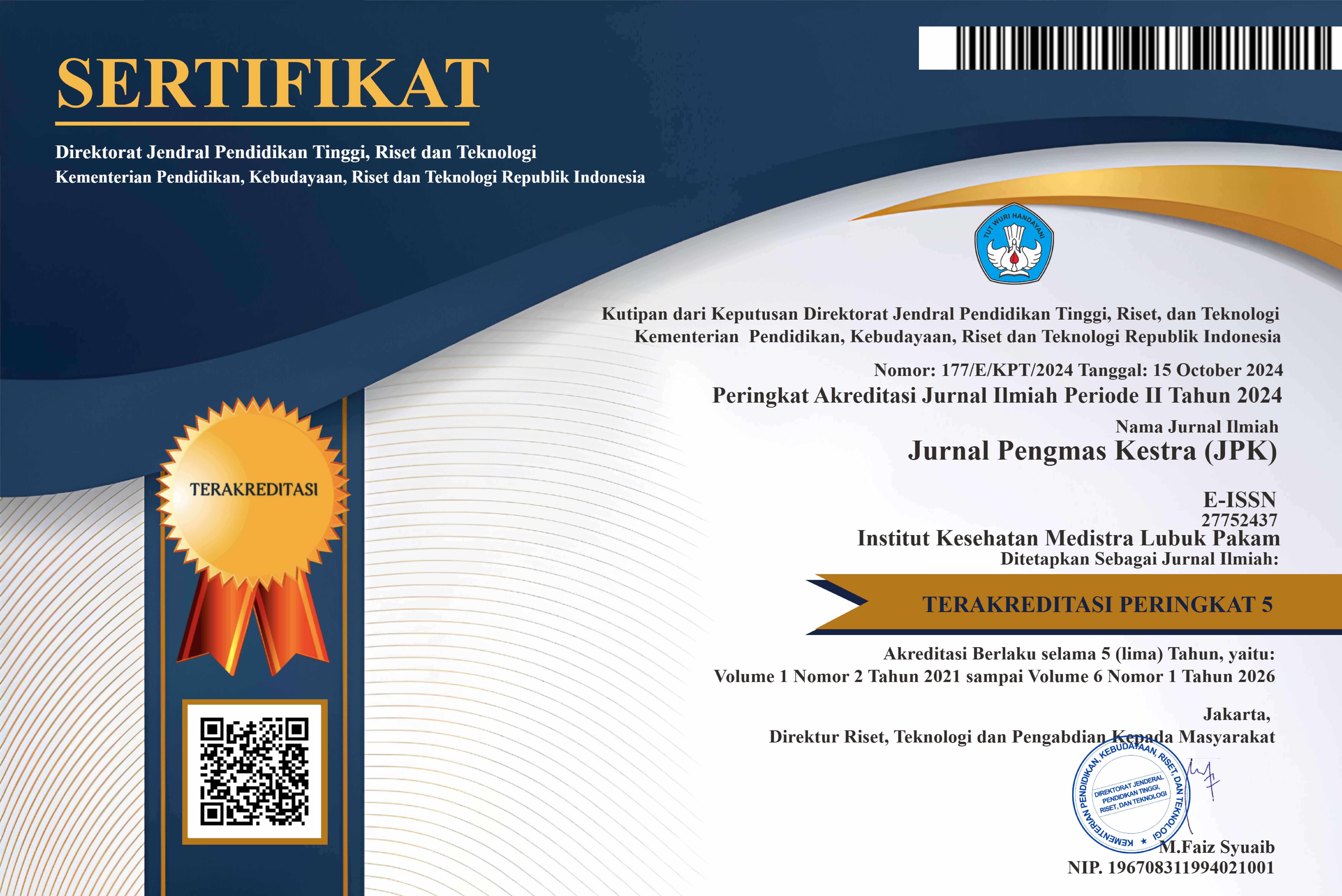WORKSHOP OF TESTING THE EFFECTIVENESS OF ANTIBACTERIAL EXTRACT OF SURUHAN (peperomia pellucida l. Kunth) LEAVES AGAINST staphylococcus epidermidis BACTERIA
DOI:
https://doi.org/10.35451/jpk.v2i1.1120Keywords:
Staphylococcus Epidermidis, Variasi Pelarut, Ekstrak Daun Suruhan (Peperomia pellucida L. Kunth )Abstract
Skin infections or dermatitis are included in the ten most common diseases in Indonesia, so the use of antibiotics is very high. The increasing use of antibiotics will cause an increase in the use of inappropriate antibiotics. The purpose of this research and community service was to find out the leaf extract of suruhan (Peperomia pellucida L. Kunth) with a variety of solvents providing anti-microbial activity against Staphylococcus epidermidis bacteria and conveying information to the public about the leaf extract that can be used as an acne medication. The results showed that the inhibition of ethanol extract and aquadest leaves of suruhan against the growth of Staphylococcus epidermidis bacteria at a concentration of 25 mg/mL clear zone 6.0 mm ethanol extract and 5.4 mm aquadest extract (Potentially Weak), concentration 50 mg/mL diameter of the extract inhibition zone ethanol 8.46 mm and aquadest extract 6.53 mm (medium potential), concentration 75 mg/mL diameter of inhibition zone 12.96 mm ethanol extract and 8.53 mm aquadest extract (strong potential). From the research data obtained, it is socialized to the public regarding the antibacterial activity of the leaves of suruhan against Staphylococcus epidermidis bacteria. The purpose of Community Service (PKM) is to provide information to the public that suruhan leaves can be used as an antibacterial to inhibit bacterial growth even with various types of solvent concentrations used. The conclusion in this study is that there are many plants that can be used to inhibit the growth and development of acne-causing bacteria, one of which is the leaf plant among young people.
Downloads
Published
Issue
Section
License
Copyright (c) 2022 JURNAL PENGMAS KESTRA (JPK)

This work is licensed under a Creative Commons Attribution 4.0 International License.
Copyright in each article is the property of the Author.




















